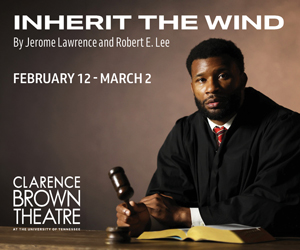Just what are the elements of a successful symphony orchestra season? Most will agree there has to be challenges to both the orchestra and the audience in the season’s programming. That programming has to have drama, intrigue, and surprises. The orchestra needs to be playing with impressive competence, focus, and energy, led by a conductor exuding confidence and possessing fresh points of view. And, along with orchestra principals capable of turning their exposed moments into something magical, it’s certainly important to have guest soloists who can delight and entertain, if not knock the listeners’ socks off. As the Knoxville Symphony Orchestra mounted its second Masterworks concert pair of the season this past weekend, they were clearly checking off a number of those boxes.
With Maestro Aram Demirjian away on a guest conducting gig with the Colorado Symphony this weekend, the conductor spot with the KSO went to Francesco Lecce-Chong, who is the music director for the Eugene Symphony in Oregon and the Santa Rosa Symphony in northern California. His program of works by Beethoven, Paul Hindemith, and Sergei Rachmaninoff covered a substantial bit of stylistic territory, but was handled by the conductor with dramatic poise and careful sculpting as he engaged the orchestra and the audience, drawing on a satisfying cache of musical emotions.
Lecce-Chong led off with Beethoven’s Leonore Overture No. 3, one of three discarded efforts by Beethoven at finding the appropriate overture for his opera Leonore, the work that eventually became the opera Fidelio. Beginning with the ominous descending scale of the opening, and continuing throughout, Lecce-Chong gave the contrasts of texture and dynamics a solid and dramatic showing, making it clear why Beethoven was unable to use this work as an operatic overture—it is every bit symphonic in nature and intent, practically a tone poem in its complexity. The offstage trumpet passages were given a solidly haunting touch by Brian Winegardner from the rear of the Tennessee Theatre balcony. Principal flute Devan Jaquez brought character to the beautiful flute passages.
As I indicated in my preview article, I believe this was the KSO’s first performance of Hindemith’s Symphony: Mathis der Maler. Although performances of the music of Hindemith have suffered a general decline over the last 50 years, this is not a work thrown to just any orchestra, as its complexity and depth are daunting. So, its appearance on the KSO stage certainly speaks volumes for the orchestra’s abilities.
For a time in the 1930s, Paul Hindemith was successful as an artist in opposing the acts of the Nazi era. His opera, Mathis der Maler, was based on the 16th Century painter Matthias Grünewald, but with the altered intent to reveal what life was like for artists under politically oppressive regimes. As the opera was being created, Hindemith worked out sections by creating a three movement symphony at the behest of Wilhelm Furtwängler, the movements corresponding to the three panels in Grünewald’s painting of the Isenheim Altarpiece. Eventually, performances of the opera were banned and Hindemith was forced to flee Nazi Germany, emigrating to Switzerland and the United States.
Maestro Lecce-Chong approached the symphony with obvious boldness and confidence, offering weight and density where needed and responsiveness to mood shifts. The second movement, “Entombment,” featured some beautiful solo moments from flutist Jaquez and principal oboe Claire Chenette. The final movement, “The Temptation of Saint Anthony,” evolved from anxiety to optimism, helped along in its goal of hope by bold ensemble playing from the KSO brass sections.

Thankfully, the Rachmaninoff Piano Concerto No. 2 was last on the program, as it would have been impossible to follow, thanks to a sensational performance by pianist Michelle Cann. Those listeners who remember her previous engagement with the KSO had an inkling of the fresh exuberance that was in store for them. Bold thunderous statements were assuaged by charming delicacy as Cann painted Romanticism as anything but sappy. In the Adagio, Cann never departed from the textural storytelling, even in those moments that are all too melodically familiar. Principal horn Jeffery Whaley’s solo passage in that movement was luminous.
Rachmaninoff gave the orchestra a prominent role in this concerto, allowing balance with the piano in offering alternative textures—gentle versus bold, forceful versus the piano’s subtlety, with a rich string sound providing a burnished background of Romanticism. The combination in the Adagio was lush and remarkably fresh. The finale was, as expected, a melodic melange that builds in density and speed, insisting that the audience leap to its feet at the end.
As if there was anyone left to impress with dazzle, Cann offered an encore that held a sly attachment to Rachmaninoff—Hazel Scott’s jazzed up, energized transcription of Rachmaninoff’s familiar Prelude in C-sharp minor. Needless to say, additional ovations were called for.






